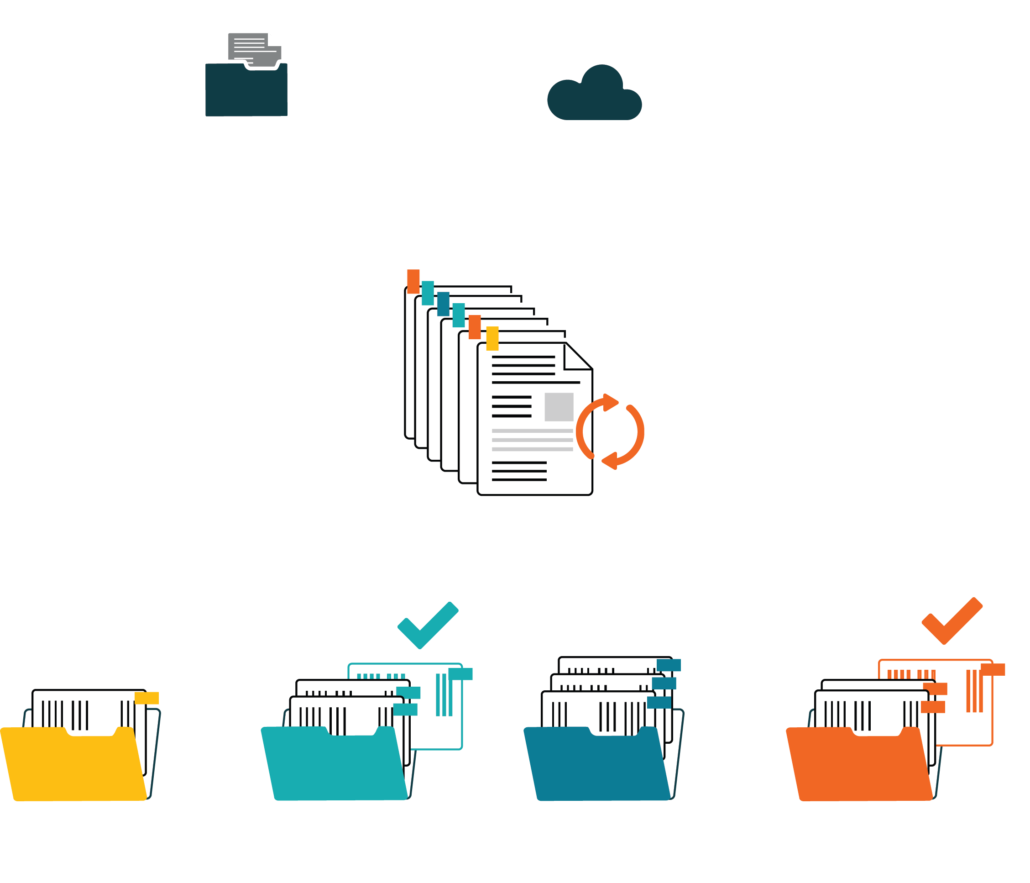Automated Data Classification
Automated data classification involves the application of a classification for a particular file or message by a pre-defined rule set. The rule set might be based on matching keywords or expressions found in the content with a given list or identifying some other characteristic of the file for example, it came from the customer information data store so needs to be protected.
Automated classification can also extend classification coverage across a variety of originating data sources, including those which originate outside of user control. This approach is useful when organisations have data generated by automated processes or systems that should be classified at the point of creation without user intervention – for example reports that are produced by an ERP system.
Some organisations look to combine automation with a user-driven approach to provide an element of support to the user. For example, applying default labels based on user group or department. This approach reduces the number of clicks that the user has to perform but by involving the user greatly enhances the accuracy of the classification process.
Automatic classification cannot understand the context of a file or document and as a result faces challenges with accuracy. Incorrect matches or ‘false positives’ reduce user’s trust in the system and failure to identify sensitive data or ‘false negatives’ expose the organisation to unnecessary risk. The challenge is to tune these algorithms to provide an acceptable error rate that avoids frustrating users and ensures policies are adequately enforced. Where this is not possible often organisations de-tune their automation rules in order to reduce the error levels, clearly this dilutes the tools effectiveness.
Blending the use of automated techniques with user-driven data classification can deliver significant benefits. Capturing user insight in the process of data classification is critical to ensuring decisions are made within the correct context. In order to get this blend of techniques right for your business, your classification solution needs to offer an integrated range of approaches that you can tailor to meet your precise needs and that can be easily adapted as your needs evolve.
Boldon James Classifier is an Enterprise Classification System that blends together best practice in user-centric and automated classification techniques in the manner most appropriate to your business.
BENEFITS
-Adapts to your business and infrastructure needs
-Reflects the differing requirements of your user communities
-Supports users in their classification decision-making
-Streamlines workflow for routine classification tasks
-Balances technology-based decision-making with user insight
-Respects the authority of user judgements
-Widens the reach of data classification
-Leverages investment in discovery tools such as DLP
Automated Data Classification The Pros and Cons
When it comes to data classification tools, one of the biggest decisions you have to make is whether to opt for automated data classification or to require your users to label data based on sensitivity. This is a difficult decision, and in this post we will assess the pros and cons associated with automated classification.
For many business owners, deciding whether to go down the automated route or not is challenging. On one hand, there are those that do not want to leave labelling to their users, as they do not trust them to always make the right, or consistent, decisions. However, there is also a valid concern that an automatic tool will not be able to understand the context of a document quite like the person who created it. The truth is that there are both advantages and disadvantages to utilising the automated approach. Firstly, implementing data classification tools automatically can reduce the possibility of human error, which is one of the biggest causes of accidental data breaches. It can also significantly improve efficiency levels. Automated tools offer a fast ROI because the man hours required for manual document processing will be reduced, significantly lowering the manual sorting and organising, and possible loss, of documents. Nevertheless, businesses can feel like they have less control of their data when going down this route. Equally, where there is an issue with data that is difficult to label, an automated tool may not have the capacity to do so effectively. In these instances, it can be better to manually sift through the documents. So, what is the best solution?
Boldon James has created the perfect product that is a blend of user-centric and automated data classification. There is no need to choose between both: you can have it all.
More than: https://www.boldonjames.com/data-classification/automated-classification/
